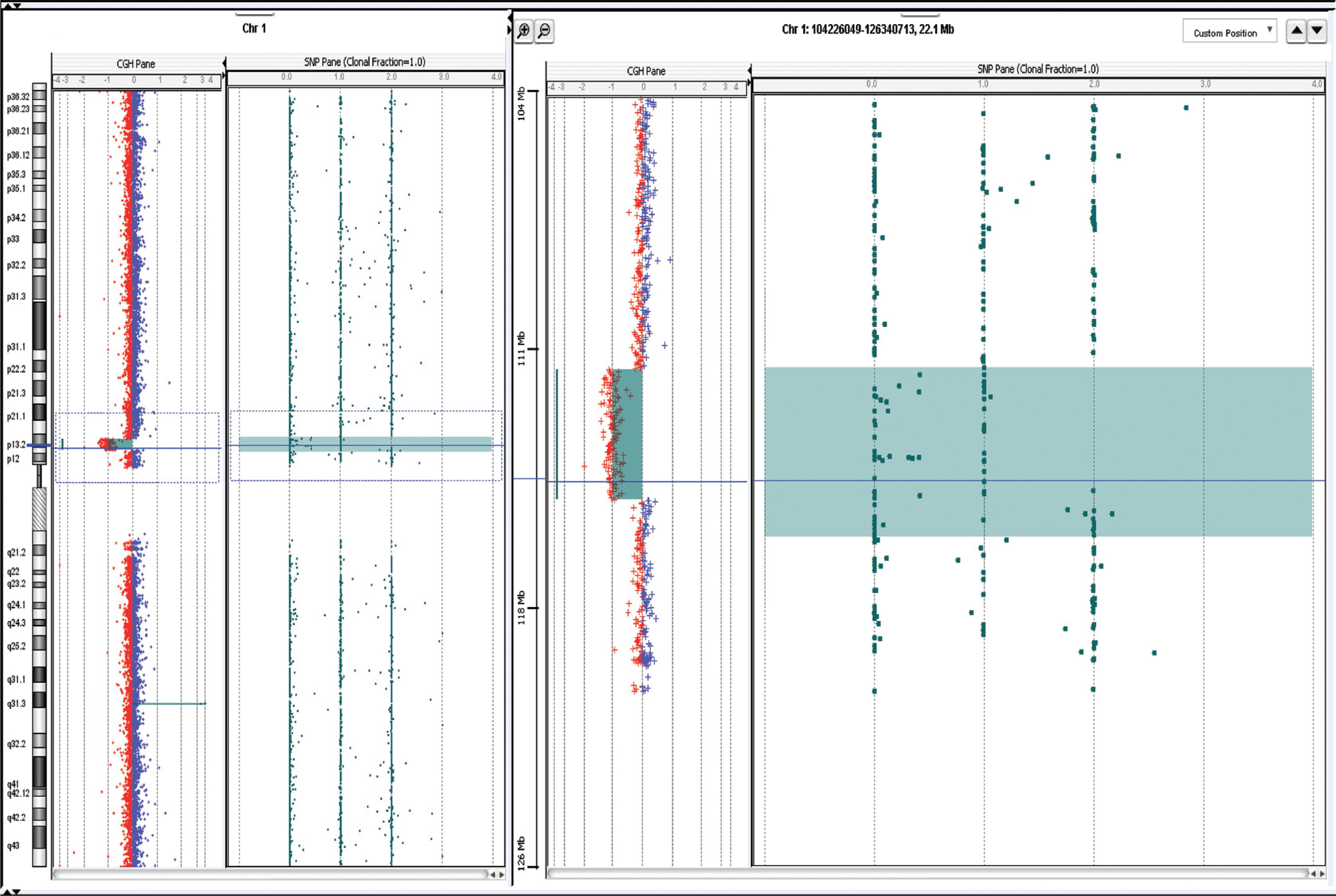Abstract
Deletion-induced hemizygosity may unmask deleterious autosomal recessive variants and be a cause of the phenotypic variability observed in microdeletion syndromes. We performed complete exome sequencing (WES) analysis to examine this possibility in a patient with 1p13.2 microdeletion. Since the patient displayed clinical features suggestive of Noonan Syndrome (NS), we also used WES to rule out the presence of pathogenic variants in any of the genes associated with the different types of NS. We concluded that the clinical findings could be attributed solely to the 1p13.2 haploinsufficiency. Retrospective analysis of other nine reported patients with 1p13.2 microdeletions showed that six of them also presented some characteristics of NS. In all these cases, the deleted segment included the NRAS gene. Gain-of-function mutations of NRAS gene are causally related to NS type 6. Thus, it is conceivable that NRAS haploinsufficiency and gain-of-function mutations may have similar clinical consequences. The same phenomenon has been described for two other genes belonging to the Ras/MAPK pathway: MAP2K2 and SHOC2. In conclusion, we here report genotype-phenotype correlations in patients with chromosome 1p13.2 microdeletions and we propose that NRAS may be a critical gene for the NS characteristics in the patients.
Keywords
1p13.2 deletion; Noonan syndrome type 6; NRAS gene; RASopathy; unmasking heterozygosity




